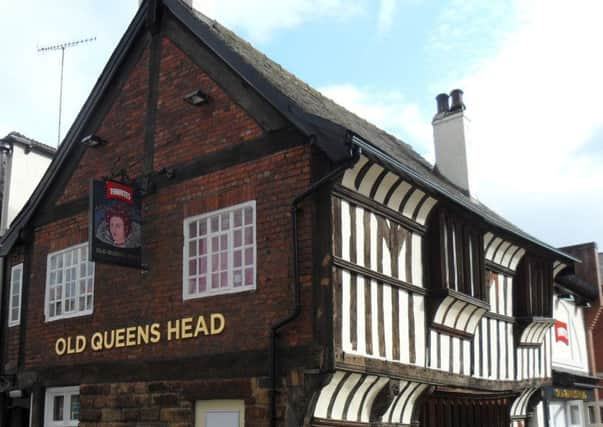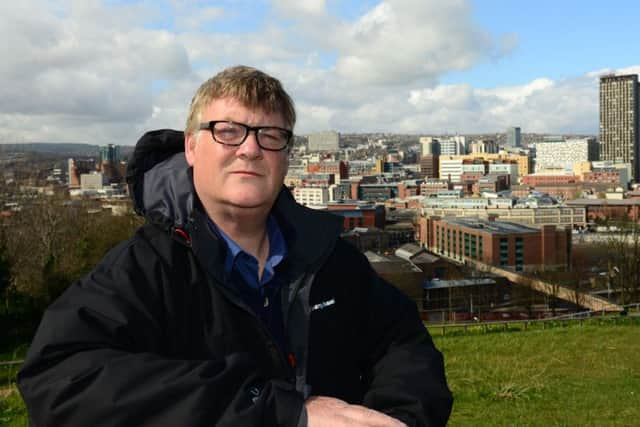Sheffield forging ahead through its heritage


SHEFFIELD is renowned for its industrial past. As the Steel City it was a northern powerhouse that helped drive Britain’s economic rise during the 19th Century.
The city’s reputation as the steel capital of the world was forged in its iron and cutlery works and while the industrial landscape has changed, the legacy of the “little mesters” lives on through artisans and craft workers who have helped revive sites such as Portland Works, near Bramall Lane.
Advertisement
Hide AdAdvertisement
Hide AdBut Sheffield’s heritage is not solely defined by its manufacturing past. The city has a rich cultural history. A theatre has stood on the site of the Lyceum since 1897 and the neighbouring Crucible Theatre has established itself as “the home of snooker.”


Then there’s its music connections. Ever since Jimmy Crawford earned the distinction of becoming the city’s first pop star when he made the Top Ten back in 1961, Sheffield has produced a conveyer belt of talent; from Joe Cocker to The Human League, to Pulp and more recently, the Arctic Monkeys.
Artists, too, have made it their home and it’s piqued the curiosity of great names over the years - Picasso came here for an international peace conference at the City Hall in 1950, famously stopping to get a trim at the barbers and drawing a peace dove on a napkin.
It is this evolving tapestry that organisers of Sheffield’s first Heritage Conference - held at Sheffield Hallam University on Saturday - hope to explore. The conference ties in with Sheffield’s Year of Making 2016 - a 12-month celebration of the city’s past, present and future.
Advertisement
Hide AdAdvertisement
Hide AdThe event is being organised by Joined Up Heritage, a group of more than 20 local organisations who want to promote the city’s history.


Brian Holmshaw, one of the chief organiers who also runs his own heritage voluntary network, believes it’s a chance to highlight all that Sheffield - home to 38 conservation areas - has to offer.
“We have an opportunity to talk over the future of this city’s heritage, from our world-renowned industrial legacy to lesser-known corners we all cherish - picture houses of the 1920s, Tudor buildings, churches, cemeteries and civic buildings, pubs and parks, right through to the gritty histories of our established and more recent communities,” he says.
“To the outside world Sheffield is a working class industrial city but beyond that what else has it got? Well, actually it’s got a great deal and anyone who explores the history of the city will understand there’s all sorts of links that go back a long way.”
Advertisement
Hide AdAdvertisement
Hide AdHe says the story of Sheffield as a man-made settlement dates back to Wincobank, an Iron Age hill fort overlooking the River Don. “This was created by the Brigantes and is a very prominent landmark and as you drive up the M1 you’ll see it on your left hand side. It was designed to overlook the Roman fort at Templeborough which is where Magna is today.”
This was 2,000 years ago and although this settlement has long since disappeared if you venture into the centre of Sheffield today you can still find buildings that are centuries old. There’s even a pub called the Old Queens Head, close to the main bus station, built before Henry VIII was born.
“It was called the Howle in the Ponds and it’s been a manufacturer, a brewery depot and a pub and when they started looking into its history to identify how old the timbers were they discovered they were from the 1480s.”
Lady’s Bridge, made famous by Sheffield musician Richard Hawley who named one of his albums after it, is another intrinsic landmark. “It was the entry over the River Don and into Sheffield and its medieval streets. Lady’s Bridge along with the castle and the markets were the core of the city centre back then.”
Advertisement
Hide AdAdvertisement
Hide AdThe bridge is one of the thousand or so Listed buildings and structures in Sheffield, something Brian would like to see promoted more. “I think a lot of people within the city itself don’t see what’s around them and that’s one of the reasons why we wanted to do this conference, to show people another side of our heritage.”
He says many of the city’s old industrial buildings, which were dormant for many years, are slowly being reinvigorated. “There’s a real groundswell of interest in this and we’re seeing these historic and characterful buildings being used in new and innovative ways by breweries, toolmakers, textile makers and artists.”
It’s a great way, he suggests, of harnessing the past to help shape the future. “Rather than demolishing the old buildings which is what happened previously why not use them, because they can help boost economic activity. Start up businesses love working with old buildings because they’ve got real character.”
This can be seen in the growing ‘antiques quarter ‘based around Abbeydale Road and London Road, to the south of the city centre.
Advertisement
Hide AdAdvertisement
Hide Ad“They’re using buildings like old coaching houses and pubs, often with a cafe, and they’re starting to do antiques fairs. It’s not widely known yet but we think having an antiques quarter is a great opportunity to add to the tourism trade in Sheffield,” he says.
It isn’t just the distant past that has been pivotal in shaping Sheffield’s identity, its more recent history, notably the 1984/85 Miners’ Strike, has played an important role too. “The miners’ headquarters was in Sheffield and a lot of the TV interviews with Arthur Scargill were done here.
“The miners from Orgreave were waiting to be tried in the courts here and there was a series of photographs in the newspapers at the time of all the scenes of jubilation when it was decided they didn’t have a case to answer,” he says.
“The Miner’s Strike was more than 30 years ago and it’s starting to become history now, so perhaps it’s time for the city to look more closely at it.”
Advertisement
Hide AdAdvertisement
Hide AdAnother key facet of Sheffield are its green credentials - it claims to be the greenest city in Britain with more trees per person than any other city in Europe.
What’s particularly interesting is this stems not from environmental campaigners but is a legacy of the city’s 19th Century captains of industry and philanthropists. “Most of those Victorian philanthropists invested their money in buildings, but in Sheffield they invested in parks.
“Living conditions in the 19th Century were cramped and they bought land to give back to the city, which is why we have this great legacy of outdoor spaces in Sheffield.”
It’s something the city has embraced over the years. “The council has come up with an idea called the Outdoor City to promote Sheffield for tourists to use as their base for doing outdoor activities.”
Advertisement
Hide AdAdvertisement
Hide AdBrian says in the past the city hasn’t always embraced its heritage in the way that rivals such as Leeds and Manchester have done.
“Sheffield has this make do and mend attitude and maybe it’s not on as grandiose a scale as in some other cities, but the city’s heritage is no less interesting.
“We underrate ourselves sometimes and by underrating ourselves we don’t always show the best of what Sheffield has to offer. But people should come here because there’s a lot to it.”
Making History for a Successful City, Sheffield Hallam University, takes place on April 16. Tickets cost £10 and can be bought until 6pm tomorrow. Email [email protected]
Sheffield 2016: Year of Making
Advertisement
Hide AdAdvertisement
Hide AdThe Year of Making is a 12-month long celebration of Sheffield’s past, present and future as a city of makers.
Vanessa Toulmin, Director of City and Cultural Engagement at the University of Sheffield, says: “Making is in the city’s DNA, ranging across advanced manufacturing to arts, music and theatre. It’s not just about culture, it’s about how economic vibrancy comes in many forms.
“Year of Making is our opportunity to showcase this by providing a crucible of creativity for residents, visitors and the next generation of would-be-makers, whether born here or wanting to make their future in our city.”
For more details go to www.sheffieldcityofmakers.co.uk